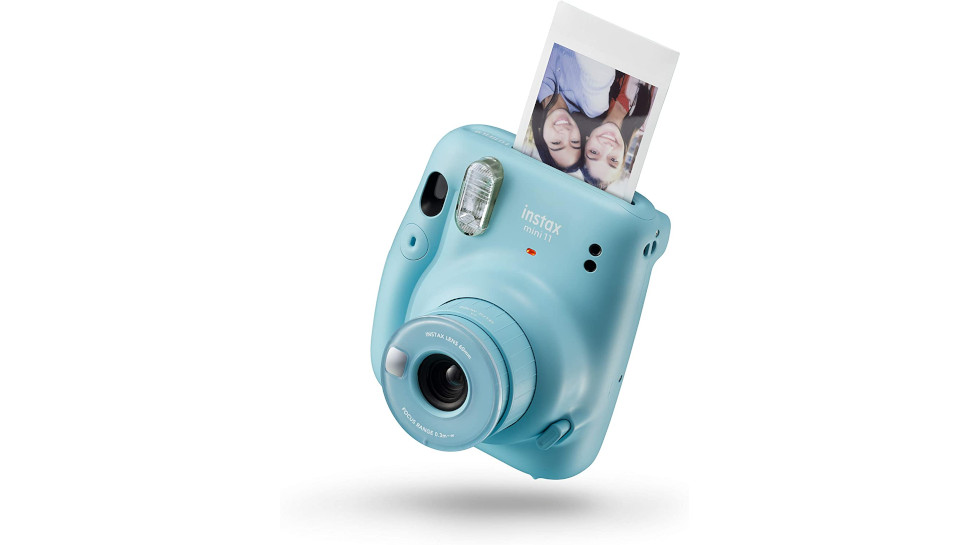These awesome CT scans show the intricate insides of instant cameras
Scan of the Month has created CT scans of popular instant and retro cameras, to show us the mechanics of how they work

Ever wanted an immensely detailed look inside the mechanics of a Polaroid camera? Look no further! Scan of the Month has shared some fascinating computerized tomography (CT) scans of popular analog film and instant cameras.
The CT scans show the working mechanisms and components that make up cameras such as the Polaroid 600 AF, Polaroid Go, and an Instax Mini 11.
• Read more: Best instant cameras
The team behind Scan of the Month has kindly provided us with some incredible images of these CT scans, which show a unique perspective detailing the insides of various camera bodies.





Elements such as gears, motors, film-ejection systems and mirrors can be seen in the scans, the guts of the camera fully exposed and explored in a rare insight into how these devices are held together.
The Polaroid 600 AF series camera is the first one up, and from the scans we can see that this 1997 camera uses a viewfinder design template taken from the 1600s (supposedly). No power source can be seen inside this camera, as film cartridges for the Polaroid 600 series include tiny batteries to power each exposure.






The more modern Polaroid Go, released in 2021, has a different construction with a lithium-ion battery and USB type-C charging port embedded into the camera housing. A more modern solution preferable to borrowing batteries from your TV remote, as the SOTM team suggest. Two spur gears connect to metal rollers as part of its film-ejection system, with plastic gears also used to reduce weight and likely cut the manufacturing cost.
The best camera deals, reviews, product advice, and unmissable photography news, direct to your inbox!
A trapezoidal first-surface mirror, as SOTM describes it, is used within the mechanics of the Polaroid Go and is a hallmark of the traditional Polaroid design. A series of step-down gears are also employed, and can be seen in the CT scans of this device, as well as the use of plastic snap fitting to keep the housing together.
Scan of the Month has a mission to democratize CT technology and make it accessible to all by reducing the traditional barriers to entry – such as cost, data handling and limits on collaboration. We spoke with Drew from SOTM, who shared with us that it's really all about featuring everyday products and looking at them in a new light.
"Even value-line cameras, or Lego, or bottle caps have an amazing amount of engineering invested in the design, manufacturing, and distribution… with Scan of the Month, we are looking to celebrate the engineering that is often taken for granted, and show off these incredible products with CT scanning so that you can see details that would not be available without tearing stuff apart."
Next up is the Fujifilm Instax Mini 11, released in 2020. A rival to Polaroid's models of instant cameras, Fujifilm has certainly expanded the market with its Instax range, but how do the internal workings of these devices compare to Polaroid's instant technology?
The scans show that the Instax Mini 11 is absolutely riddled with screws. While this makes the camera easier to disassemble, the interior of this camera looks like a constellation of sorts, which SOTM humorously points out.





This camera includes a 60mm lens with a convenient selfie mirror located on the front. We can see from the CT scans that the Instax uses folded light through its viewfinder by a prism to add focal length, the prism folds the light four times to present the image at an upright eye level.
Be sure to keep an eye out for the next set of magnificent scans that Scan of the Month provides, as well as their archive of previous scans featuring Lego, Apple AirPods and a Nintendo GameBoy!
• Read more:
Best digital instant cameras
What type of instant film do I need?
Polaroid Now+ review
Polaroid Go review
Instax Mini 11 review

Beth kicked off her journalistic career as a staff writer here at Digital Camera World, but has since moved over to our sister site Creative Bloq, where she covers all things tech, gaming, photography, and 3D printing. With a degree in Music Journalism and a Master's degree in Photography, Beth knows a thing or two about cameras – and you'll most likely find her photographing local gigs under the alias Bethshootsbands. She also dabbles in cosplay photography, bringing comic book fantasies to life, and uses a Canon 5DS and Sony A7III as her go-to setup.



